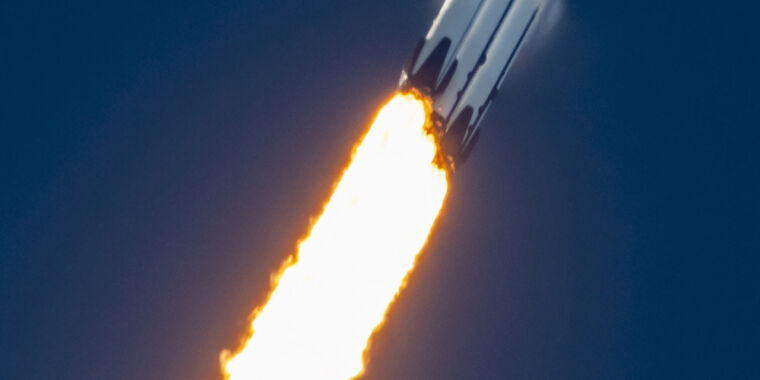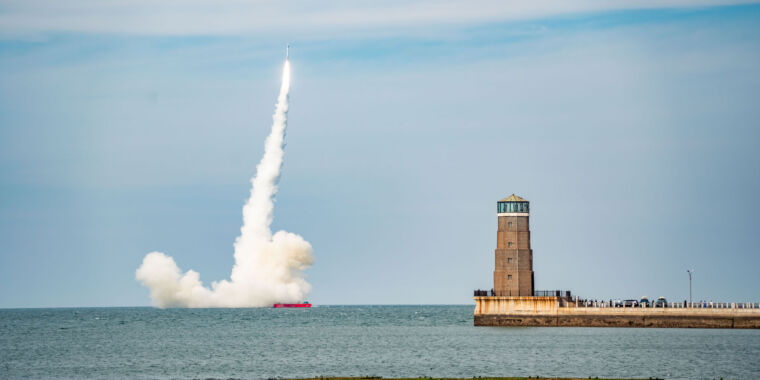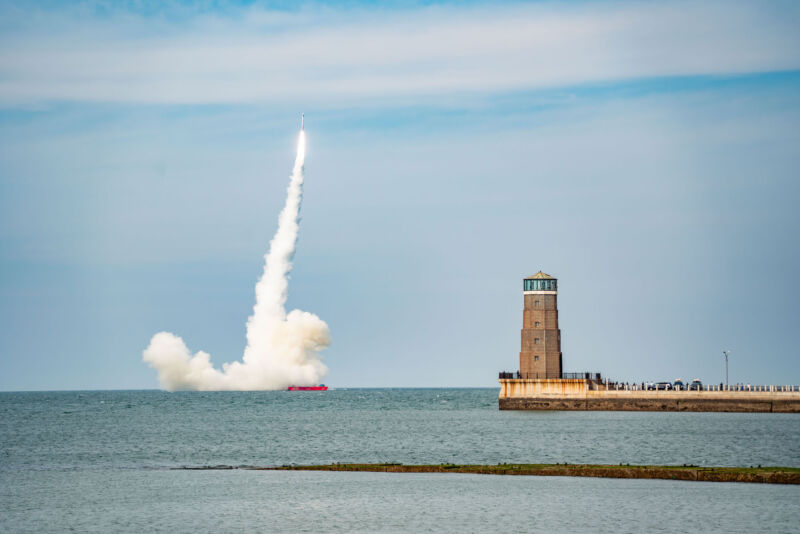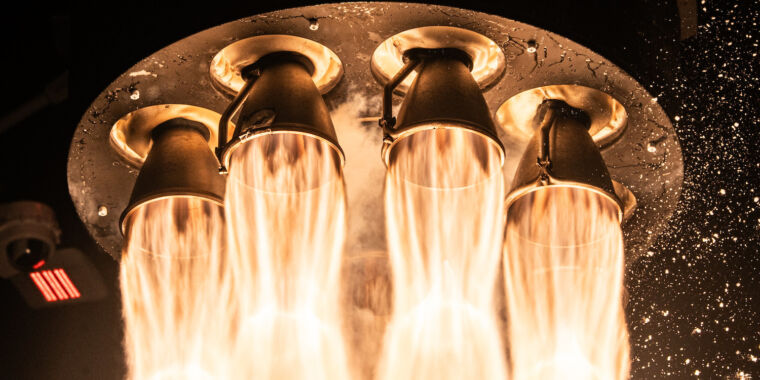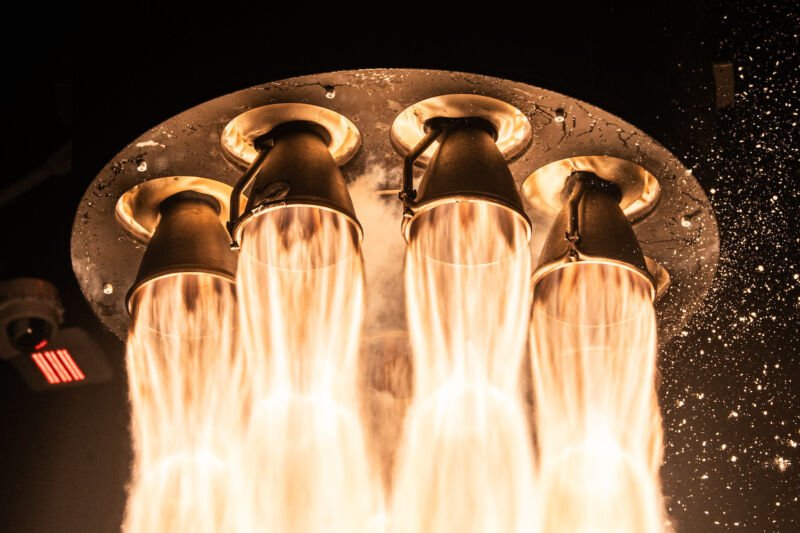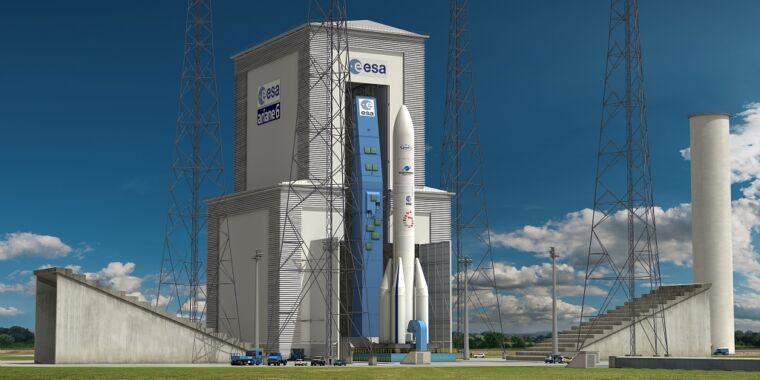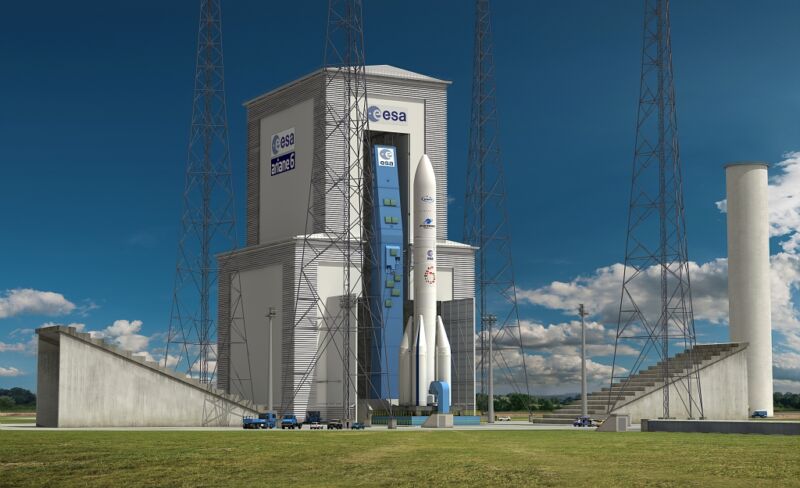Rocket Report: China flies reusable rocket hopper; Falcon Heavy dazzles
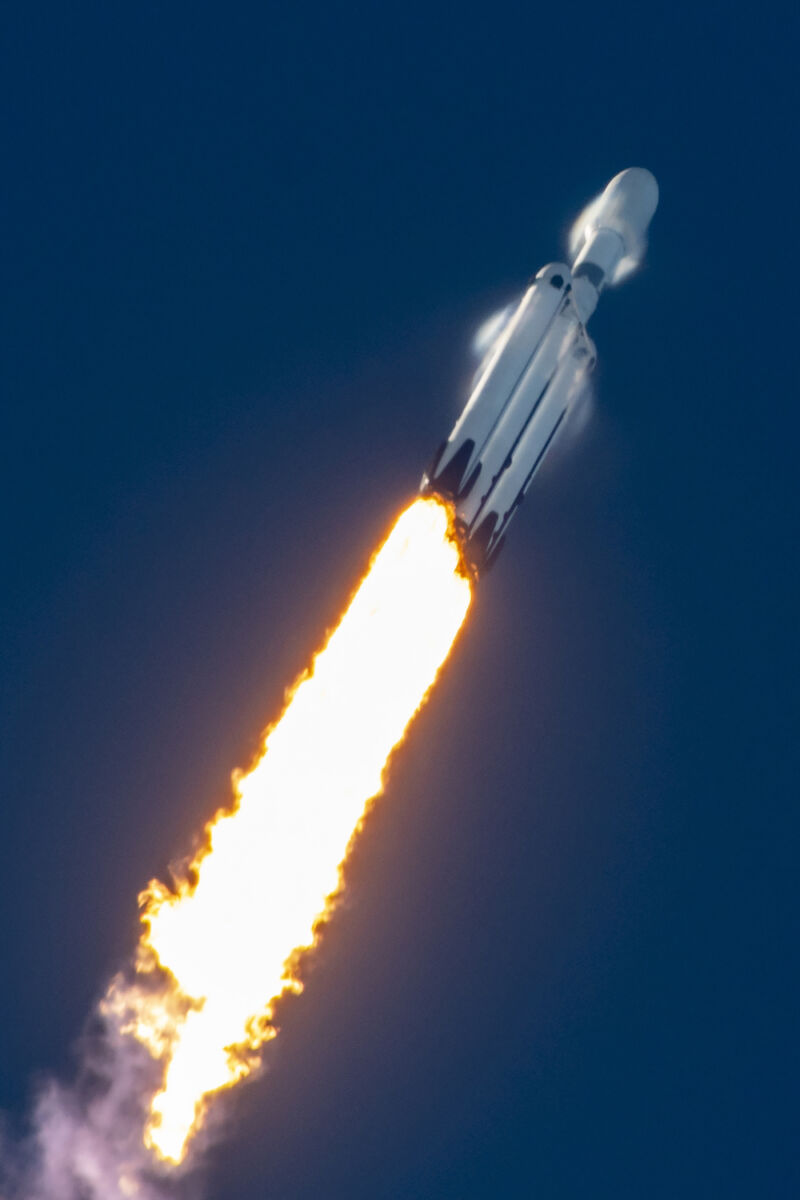
Enlarge / SpaceX’s 10th Falcon Heavy rocket climbs into orbit with a new US government weather satellite.
Welcome to Edition 6.50 of the Rocket Report! SpaceX launched its 10th Falcon Heavy rocket this week with the GOES-U weather satellite for NOAA, and this one was a beauty. The late afternoon timing of the launch and atmospheric conditions made for great photography. Falcon Heavy has become a trusted rocket for the US government, and its next flight in October will deploy NASA’s Europa Clipper spacecraft on the way to explore one of Jupiter’s enigmatic icy moons.
As always, we welcome reader submissions, and if you don’t want to miss an issue, please subscribe using the box below (the form will not appear on AMP-enabled versions of the site). Each report will include information on small-, medium-, and heavy-lift rockets as well as a quick look ahead at the next three launches on the calendar.

Sir Peter Beck dishes on launch business. Ars spoke with the recently knighted Peter Beck, founder and CEO of Rocket Lab, on where his scrappy company fits in a global launch marketplace dominated by SpaceX. Rocket Lab racked up the third-most number of orbital launches by any US launch company (it’s headquartered in California but primarily assembles and launches rockets in New Zealand). SpaceX’s rideshare launch business with the Falcon 9 rocket is putting immense pressure on small launch companies like Rocket Lab. However, Beck argues his Electron rocket is a bespoke solution for customers desiring to put their satellite in a specific place at a specific time, a luxury they can’t count on with a SpaceX rideshare.
Ruthlessly efficient … A word that Beck returned to throughout his interview with Ars was “ruthless.” He said Rocket Lab’s success is a result of the company being “ruthlessly efficient and not making mistakes.” At one time, Rocket Lab was up against Virgin Orbit in the small launch business, and Virgin Orbit had access to capital through billionaire Richard Branson. Now, SpaceX is the 800-pound gorilla in the market. “We have a saying here at Rocket Lab that we have no money, so we have to think. We’ve never been in a position to outspend our competitors. We just have to out-think them. We have to be lean and mean.”
Firefly reveals plans for new launch sites. Firefly Aerospace plans to use the state of Virginia-owned launch pad at NASA’s Wallops Flight Facility for East Coast launches of its Alpha small-satellite rocket, Aviation Week reports. The company plans to use Pad 0A for US military and other missions, particularly those requiring tight turnaround between procurement and launch. This is the same launch pad previously used by Northrop Grumman’s Antares rocket, and it’s the soon-to-be home of the Medium Launch Vehicle (MLV) jointly developed by Northrop and Firefly. The launch pad will be configured for Alpha launches beginning in 2025, according to Firefly, which previously planned to develop an Alpha launch pad at Cape Canaveral Space Force Station in Florida. Now, Alpha and MLV rockets will fly from the same site on the East Coast, while Alpha will continue launching from the West Coast at Vandenberg Space Force Base, California.
Hello, Sweden… A few days after the announcement for launches from Virginia, Firefly unveiled a collaborative agreement with Swedish Space Corporation to launch Alpha rockets from the Esrange Space Center in Sweden as soon as 2026. Esrange has been the departure point for numerous suborbital and sounding rocket for nearly 50 years, but the spaceport is being upgraded for orbital satellite launches. A South Korean startup named Perigee Aerospace announced in May it signed an agreement to be the first user of Esrange’s orbital launch capability. Firefly is the second company to make plans to launch satellites from the remote site in northern Sweden. (submitted by Ken the Bin and brianrhurley)
The easiest way to keep up with Eric Berger’s space reporting is to sign up for his newsletter, we’ll collect his stories in your inbox.
China hops closer to reusable rockets. The Shanghai Academy of Spaceflight Technology (SAST), part of China’s apparatus of state-owned aerospace companies, has conducted the country’s highest altitude launch and landing test so far as several teams chase reusable rocket capabilities, Space News reports. A 3.8-meter-diameter (9.2-foot) test article powered by three methane liquid-oxygen engines lifted off from the Gobi Desert on June 23 and soared to an altitude of about 12 kilometers (7.5 miles) before setting down successfully for a vertical propulsive touchdown on landing legs at a nearby landing area. SAST will follow up with a 70-kilometer (43.5-mile) suborbital test using grid fins for better control. A first orbital flight of the new reusable rocket is planned for 2025.
Lots of players … If you don’t exclusively follow China’s launch sector, you should be forgiven for being unable to list all the companies working on new reusable rockets. Late last year, a Chinese startup named iSpace flew a hopper rocket testbed to an altitude of several hundred meters as part of a development program for the company’s upcoming partially reusable Hyperbola 2 rocket. A company named Space Pioneer plans to launch its medium-class Tianlong 3 rocket for the first time later this year. Tianlong 3 looks remarkably like SpaceX’s Falcon 9, and its first stage will eventually be made reusable. China recently test-fired engines for the government’s new Long March 10, a partially reusable rocket planned to become China’s next-generation crew launch vehicle. These are just a few of the reusable rocket programs in China. (submitted by Ken the Bin)
Spanish launch startup invests in Kourou. PLD Space says it is ready to start construction at a disused launch complex at the Guiana Space Center in Kourou, French Guiana. The Spanish launch startup announced this week a 10 million euro ($10.7 million) investment in the launch complex for its Miura 5 rocket, with preparations of the site set to begin “after the summer.” The launch pad was previously used by the French Diamant rocket in the 1970s and is located several miles away from the launch pads used by the European Ariane 6 and Vega rockets. PLD Space is on track to become the first fully commercial company to launch from the spaceport in South America.
Free access to space … Also this week, PLD Space announced a new program to offer space aboard the first two flights of its Miura 5 rocket for free, European Spaceflight reports. The two-stage Miura 5 rocket will be capable of delivering about a half-ton of payload mass into a Sun-synchronous orbit. PLD Space will offer free launch services aboard the first two Miura 5 flights, which are expected to take place in late 2025 and early 2026. The application process will close on July 30, and winning proposals will be announced on November 30. (submitted by Ken the Bin and EllPeaTea)
Rocket Report: China flies reusable rocket hopper; Falcon Heavy dazzles Read More »
